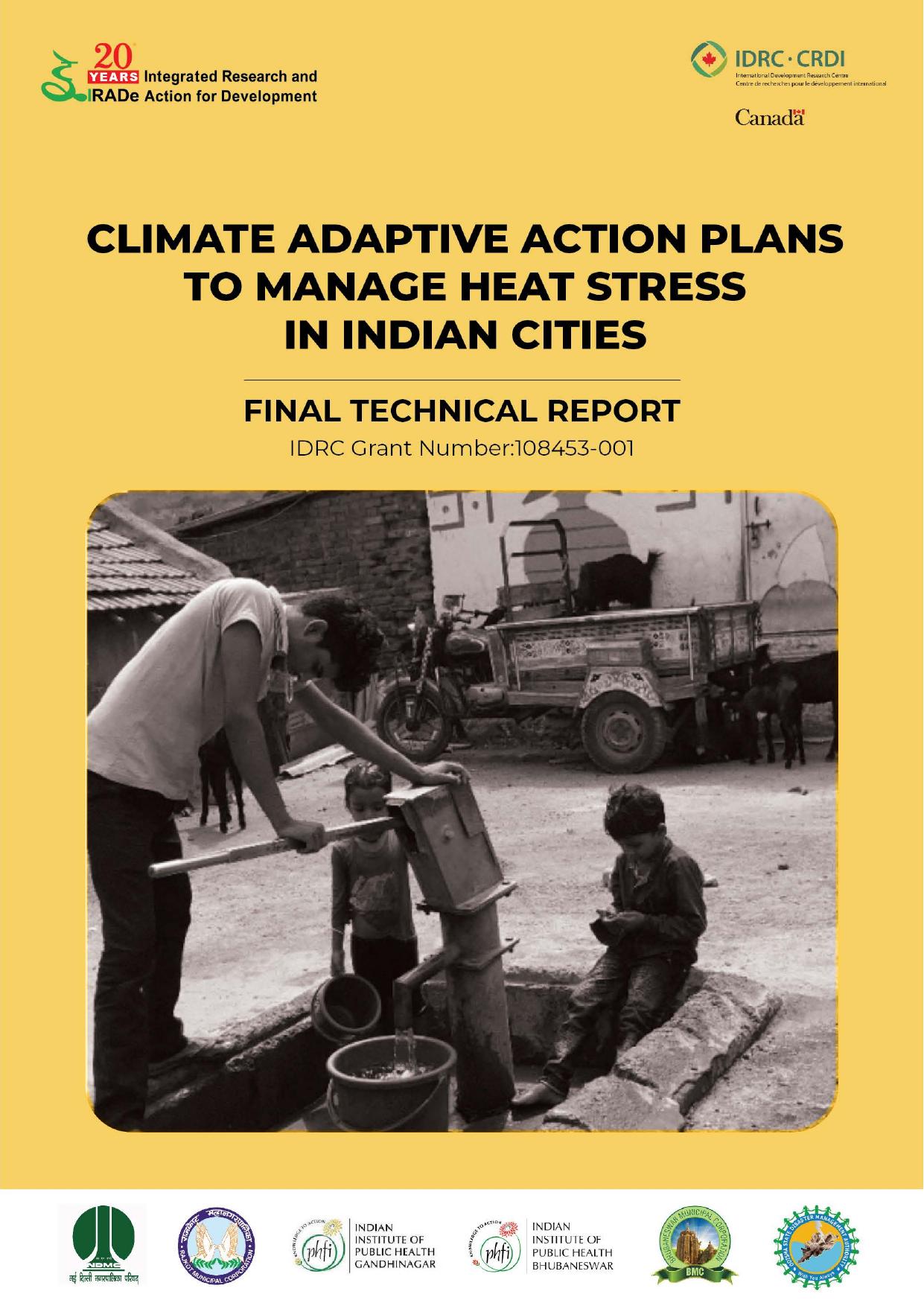Sustainable Solutions For Urban Heat: New Materials For Indian Cities

Table of Contents
Cool Roofs: Reflecting Heat Away
Cool roofs are designed to reflect sunlight and radiate heat away from buildings, significantly reducing surface temperatures and the overall urban heat island effect. Their effectiveness stems from their high albedo – the ability to reflect solar radiation. Several types of cool roof materials are available:
-
High-albedo paints: These paints, with their high solar reflectance index (SRI), are a cost-effective solution. Several Indian manufacturers offer such paints, often incorporating ceramic or other reflective pigments. These paints can be applied to existing roofs, making them a readily accessible option for heat mitigation.
-
Green roofs (living roofs): These roofs, covered with vegetation, offer exceptional cooling benefits through evapotranspiration. While the initial investment is higher, they provide numerous environmental advantages, including improved insulation, stormwater management, and biodiversity enhancement. Challenges in the Indian context include the need for suitable plant selection, irrigation management, and structural reinforcement to support the added weight.
-
Cool roofing tiles: Several manufacturers now produce cool roofing tiles with enhanced reflectivity. These tiles, often made from materials like concrete or clay with a special coating, offer a durable and aesthetically pleasing alternative to traditional roofing materials. They contribute to energy efficiency and reduce the urban heat island effect.
The energy savings from cool roofs translate to lower electricity consumption for air conditioning, reducing carbon emissions and contributing to India's sustainable development goals. Several government initiatives in India are promoting the adoption of cool roofs through subsidies and awareness campaigns, recognizing their significant role in heat mitigation.
Building Envelope Innovations: Minimizing Heat Gain
The building envelope – the outer layer of a building – plays a critical role in heat transfer. Innovative materials can significantly minimize heat gain, improving thermal insulation and reducing the need for excessive cooling.
-
Earth-based materials: Rammed earth and stabilized earth blocks are excellent thermal insulators, readily available in many parts of India. Using these locally sourced materials reduces transportation costs and carbon emissions, promoting sustainable construction practices.
-
Aerated concrete blocks (AAC): AAC blocks offer superior thermal insulation compared to traditional clay bricks, reducing heat transfer and improving energy efficiency. Their lightweight nature also makes them easier to handle and transport, reducing construction time and costs.
-
Bamboo and other sustainable timber options: Bamboo, a rapidly renewable resource, is widely available in India and offers excellent strength-to-weight ratios. Its use in construction contributes to sustainable building practices and reduces reliance on carbon-intensive materials. Other sustainably sourced timber options, depending on regional availability, also provide excellent thermal properties.
Proper building design and orientation are crucial for maximizing the effectiveness of these materials. Shading techniques, natural ventilation, and strategic window placement can significantly reduce heat gain, further improving energy conservation and reducing the urban heat island intensity. The long-term cost-effectiveness of these sustainable building materials outweighs the initial investment, contributing to lower operational costs and environmental benefits.
Urban Greenery and Landscaping: Nature's Cooling Effect
Trees and vegetation play a vital role in mitigating the urban heat island effect through shade, evapotranspiration, and reduced solar radiation absorption. Urban forestry and green infrastructure are crucial for creating cooler and more livable urban environments.
-
Strategic planting of trees can significantly reduce surface temperatures and improve air quality. Choosing drought-resistant and native plant species is crucial for minimizing water consumption and ensuring the long-term viability of these green spaces within the Indian climate.
-
Creating green corridors, parks, and rooftop gardens not only improves the aesthetic appeal of cities but also enhances biodiversity and provides crucial recreational spaces.
-
Green infrastructure, including green walls and permeable pavements, further enhances cooling effects, managing stormwater runoff and reducing the urban heat island intensity.
The benefits extend beyond temperature reduction. Urban greenery improves air quality, enhances human wellbeing, and boosts property values, creating a more sustainable and resilient urban environment.
Government Policies and Incentives: Driving Adoption of Sustainable Materials
Government policies and incentives are crucial for driving the adoption of sustainable building materials in India. Existing and planned initiatives play a vital role in accelerating the transition to cooler, more sustainable cities.
-
Financial incentives, such as tax breaks and subsidies, can make sustainable building materials more affordable and accessible to developers and homeowners.
-
Stringent green building codes and regulations can mandate the use of sustainable materials in new constructions and renovations.
-
Initiatives promoting research and development in sustainable building materials ensure the availability of innovative and locally appropriate solutions.
Government support is essential for integrating sustainable solutions into urban planning and development strategies, accelerating the reduction of the urban heat island effect in Indian cities and fostering sustainable development goals.
Embracing Sustainable Solutions for a Cooler Future in Indian Cities
Adopting sustainable building materials offers a multifaceted approach to mitigating the urban heat island effect in Indian cities. The combined use of cool roofs, innovative building envelope materials, and urban greenery provides a holistic strategy for creating cooler, more resilient, and livable urban environments. The long-term economic, environmental, and social benefits are substantial, leading to improved public health, reduced energy consumption, and enhanced quality of life. We urge you to learn more about sustainable building materials and their applications in your communities. Research local government initiatives related to green building and explore options for heat mitigation in your own projects. Together, we can create a cooler, more sustainable future for Indian cities through the widespread adoption of sustainable solutions for urban heat.

Featured Posts
-
 Dolberg 25 Mal Eller Mere Et Realistisk Chokskifte
May 30, 2025
Dolberg 25 Mal Eller Mere Et Realistisk Chokskifte
May 30, 2025 -
 Hbo To Adapt Gisele Pelicots Book On Rape
May 30, 2025
Hbo To Adapt Gisele Pelicots Book On Rape
May 30, 2025 -
 Over The Counter Birth Control Access Affordability And The Future Of Reproductive Healthcare
May 30, 2025
Over The Counter Birth Control Access Affordability And The Future Of Reproductive Healthcare
May 30, 2025 -
 Manila Bays Vibrancy A Sustainable Future
May 30, 2025
Manila Bays Vibrancy A Sustainable Future
May 30, 2025 -
 Child Poverty And Elon Musk Fact Checking The Accusations And Response
May 30, 2025
Child Poverty And Elon Musk Fact Checking The Accusations And Response
May 30, 2025
